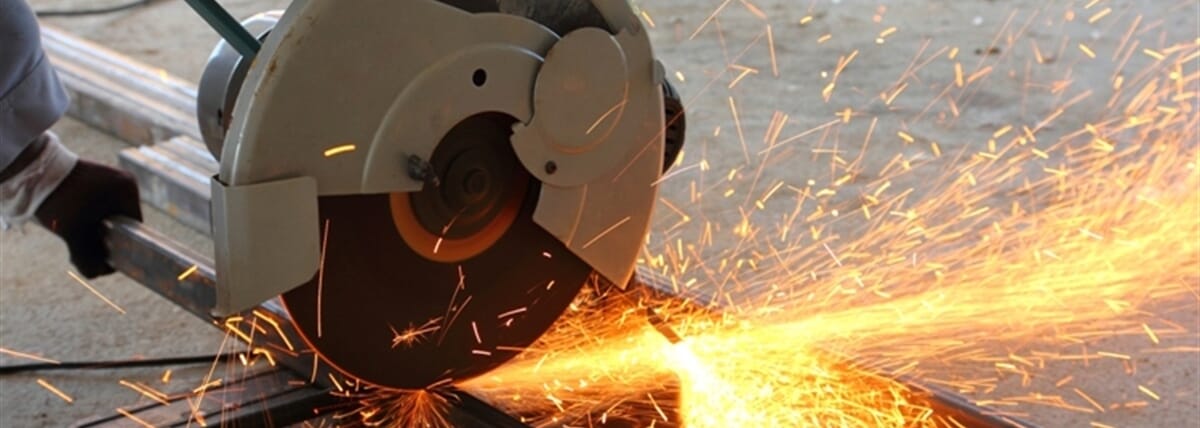Everything you need to know about Noise at Work Assessments
Excessive noise in the workplace can be a nuisance. But did you know that it’s also a genuine health and safety threat?


Under the Noise at Work Regulations, employers have a legal duty to manage the risks associated with employee exposure to noise. Noise at Work Assessments ensure compliance with these stringent regulations, while also safeguarding employee health and maintaining productivity within the workplace.
In this blog, we explore what a Noise at Work Assessment involves, and why it’s essential for busy industries like construction, manufacturing, and transport.

Why is a Noise at Work Assessment important?
Noise-induced hearing loss is one of the most common yet entirely preventable workplace health conditions. The HSE estimates that around 12,000 UK employees have work-related hearing problems – a number which could be greatly reduced with some simple changes.
The Control of Noise at Work Regulations were introduced in 2005 to help protect employees from the long-term damage caused by exposure to high decibel levels. A noise risk assessment allows you to identify noise sources, measure exposure levels, and determine which mitigation measures are needed to lessen these effects. Without this assessment, you’re not only endangering your employees, but also risking potential fines, claims, and reputational damage.
Who needs a Noise at Work Assessment?
The Noise at Work Regulations apply to a wide range of sectors, especially where machinery, tools, and vehicles generate hazardous levels of noise. Specific industry-related activities that might emit loud noises include:
- Construction – from demolition to piling, many construction site activities exceed the safe noise thresholds
- Manufacturing – equipment like compressors, drills, and presses often emit harmful noise levels
- Transport and logistics – sites such as airports, rail depots, and freight hubs are high-noise by nature
What are the workplace noise exposure limits?
You must conduct a noise assessment if your employees are likely to be exposed to noise levels equal to or above the following values:
| Exposure value | Daily or weekly personal noise exposure | Peak sound pressure level |
| Lower Exposure Action Value | 80 decibels (A-weighted) | 135 decibels (C-weighted) |
| Upper Exposure Action Value | 85 decibels (A-weighted) | 137 decibels (C-weighted) |
| Exposure Limit Value | 87 decibels (A-weighted) | 140 decibels (C-weighted) |
If the Lower Exposure Action Value is reached, you must provide employees with detailed information about the risks associated with noise exposure in the workplace, and train them on the correct uses of hearing protection for their role. If your employees are exposed to the Upper Action Value, you must make hearing protection devices a mandatory requirement, and implement a formal hearing protection programme for your workplace.
If your employees experience the Peak Exposure Limit, even for a short period, this could cause immediate and irreversible hearing damage. Therefore, it’s vital that you complete a Noise at Work Assessment, before it’s too late.

What does a Noise at Work Assessment involve?
Our comprehensive Noise at Work Assessments involve several key steps. These include:
1) Initial consultation
One of our expert Acoustic Consultants will visit your site to gather information about your working conditions, workforce, and machinery. This allows us to determine which areas to focus on and plan out the assessment effectively.
2) Noise measurement
Using Class 1 sound level meters and personal noise dosimeters, we take accurate readings of noise levels throughout your site. We compare these readings against the statutory occupational noise exposure limits to identify any areas of concern and tasks or employees at risk.
3) Detailed reporting
We deliver a detailed written report which includes clear, actionable advice on any mitigation measures required. These could include engineering controls, administrative changes, and hearing protection strategies.
4) Ongoing support
One Noise at Work Assessment isn’t enough to keep your workplace safe forever. Your environment should be re-tested at least every 2-3 years, or sooner if any machinery or work processes change. This ensures you continue to remain compliant with the Noise at Work Regulations.
How Encon Associates ensures safe noise levels in the workplace
Noise at work is an invisible hazard – but if you’re not aware of the risks, it can have disastrous consequences. At Encon Associates, we offer Noise at Work Assessments to help you protect workers from the adverse health effects of noise exposure and comply with workplace noise regulations.
Our experienced Acoustic Consultants will visit your workplace and conduct highly accurate noise monitoring using industry-leading equipment, before presenting you with a detailed report that outlines clear solutions to reduce noise levels. We will work with you to implement any mitigation measures, and can also offer a range of complementary environmental assessment services to further support building regulatory compliance.
Unsure whether your business meets the required noise standards? Don’t put your employees at risk. Get in touch with our expert team to arrange your Noise at Work Assessment.
Call: 01159 875 599 or email:
I can only say positive things about Encon Associates. They always endeavour to get out quality work within tight timescales. Mark is very approachable with any queries and is very knowledgeable in his field.
